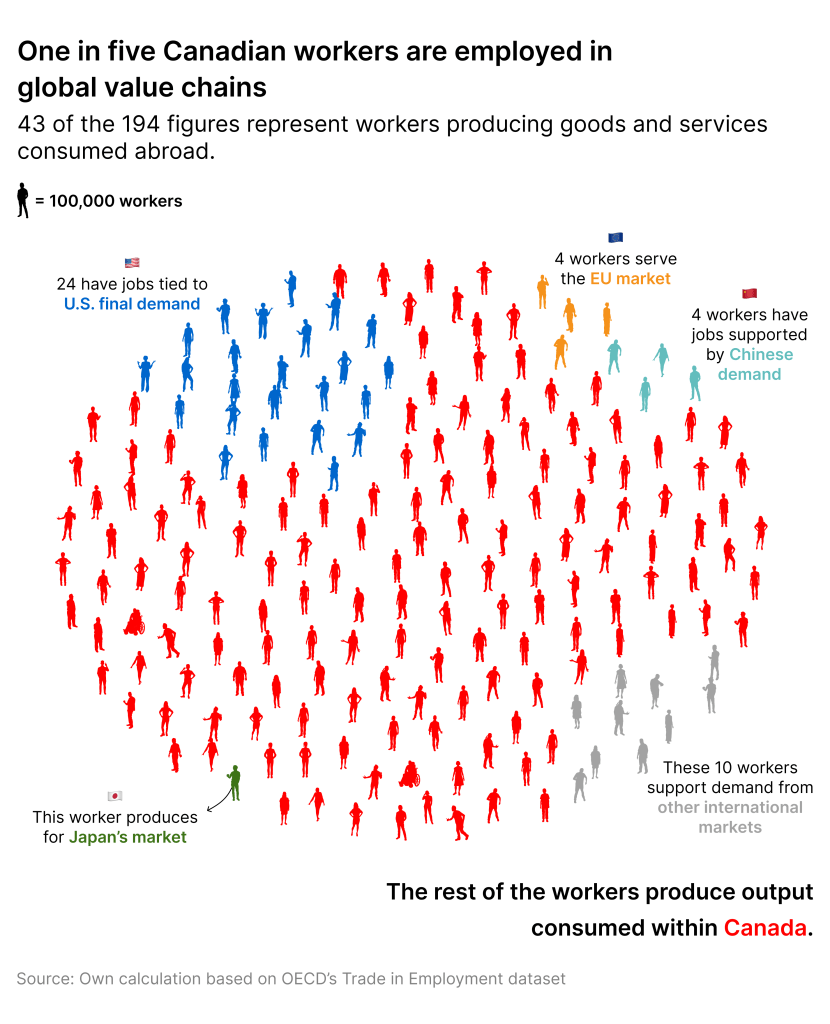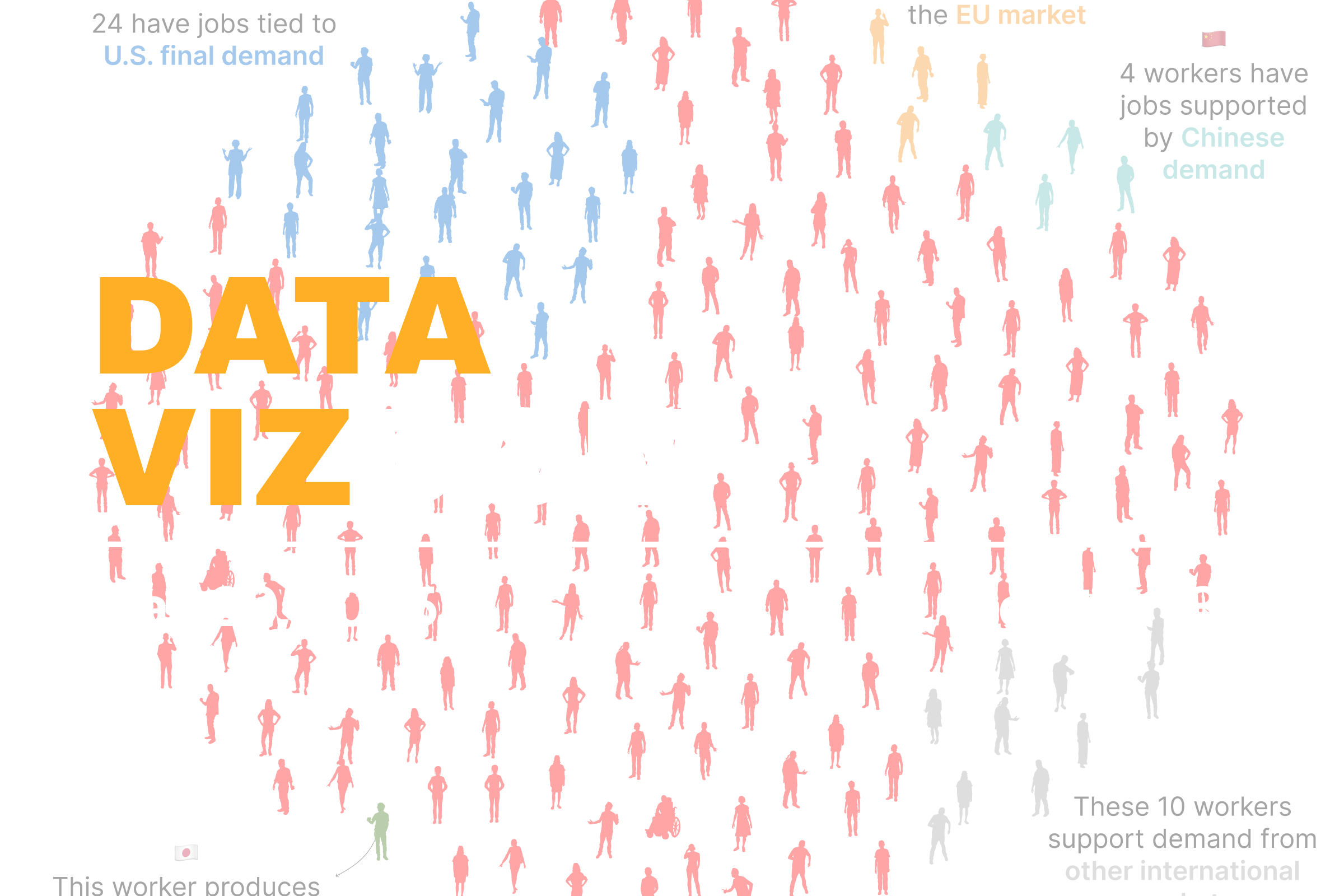Every traded good reflects not just international commerce but also the labour behind it. As production stretches across borders, understanding the people behind those processes becomes essential.
To capture these linkages, the OECD developed the Trade in Employment (TiM) dataset as an extension of its Trade in Value Added (TiVA) framework. While TiVA traces how value flows through supply chains, TiM shifts the lens to labour. It combines employment data with global input-output tables to estimate how many jobs in one country exist to meet final demand in another.
Canada’s data tells an important story. Roughly 22% of Canadian workers—or 1 in 5—are effectively plugged into global value chains. Their jobs depend on demand from other countries, primarily the U.S., but also from China, the EU, and others. While this share is lower than in highly exposed economies like Ireland or Singapore, it still represents a significant portion of the Canadian labour force.
The visual below illustrates this. 194 figures, each representing 100,000 Canadian workers, symbolize the country’s 19.4 million-strong workforce. Among them, 43 figures represent those jobs that are sustained by foreign consumption of Canadian goods and services.

This connection between Canadian workers and global demand shows how changes in foreign consumption, supply chains, or policy can directly affect jobs at home. Quantifying the number of workers embedded in global value chains gives us a clearer view of Canada’s economic interdependence and a stronger foundation for shaping resilient employment strategies in an uncertain world.
What better way to understand concepts big and small than through data visualizations? In this blog series, we explore timely themes in economics and transportation, drawing on data from the SLGL dataHub.
